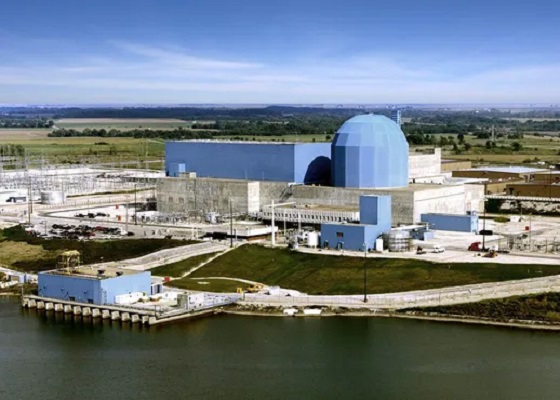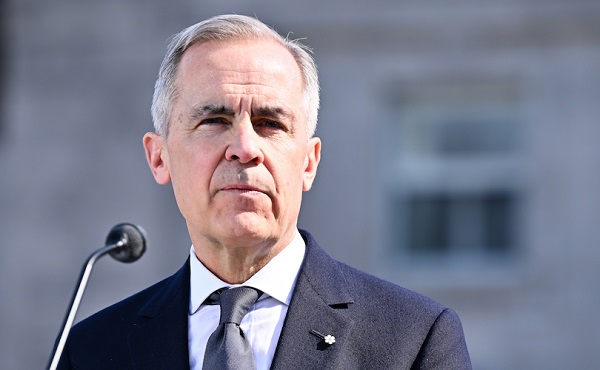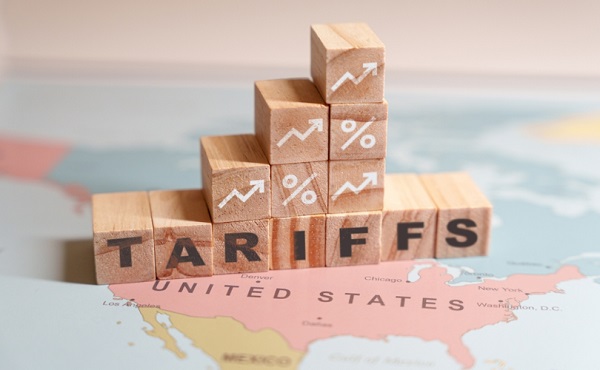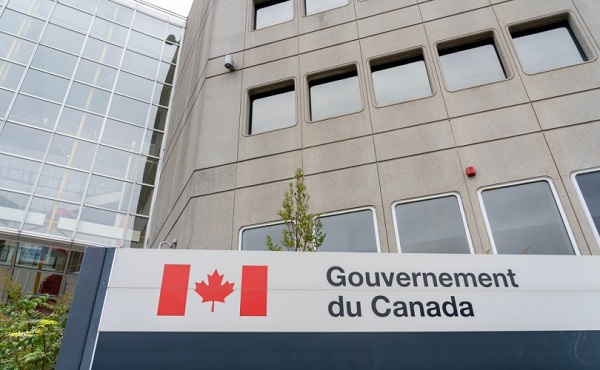Business
Governments must work to improve Canadian living standards despite recent good news

From the Fraser Institute
By Jake Fuss and Grady Munro
For years, Canadians have experienced a decline in living standards. According to new data from Statistics Canada, living standards may finally be headed back in the right direction, but there’s still much work to be done.
The new numbers show that inflation-adjusted gross domestic product (GDP)—the final value of all goods and services produced in the economy—grew by 0.5 per cent during the first three months of 2025. During that same period, population growth slowed considerably to just 0.2 per cent. For perspective, the average quarterly population growth last year was three times this rate at 0.6 per cent. As a result, inflation-adjusted per-person GDP—a broad measure of individual living standards—grew by 0.4 per cent to reach $59,146 at the end of March 2025.
This is a good sign as it marks the first time living standards have improved for two consecutive quarters (per-person GDP grew 0.1 per cent to end 2024) since the first half of 2022, but we must temper our optimism. Economic growth remains relatively weak compared to historical numbers. And a per-person GDP of $59,146 is still 2.6 per cent below the mid-2022 level ($60,718). For comparison, per-person GDP in the United States after the first three months of 2025 is 4.9 per cent higher than in mid-2022.
Simply put, Canadian living standards remain well below levels they’ve been in past years and growth has fallen well behind growth south of the border, meaning governments across Canada must take steps to promote economic growth.
Recently, there has been a push in Canada to eliminate interprovincial trade barriers, which inhibit the free flow of goods and services between provinces and act as a drag on the economy. Several provinces have already taken steps towards this end, and the federal government has committed to eliminate all federally-imposed trade barriers by Canada Day. These efforts are long overdue, and should be joined by all governments across the country.
Governments should also get their finances in order and finally stop adding to the mountain of debt. In 2025/26, nine out of 10 provinces (except Saskatchewan) and the federal government plan to run budget deficits—meaning they will spend more money than they collect in revenues and thus must borrow additional funds. Consequently, government debt will continue to rise.
Rising government debt acts as a drag on the economy. Indeed, research suggests that when combined federal and provincial government debt exceeds the entire size of the economy (as it did in seven out of 10 provinces in 2022) additional debt offers little benefit to economic growth, and instead inhibits growth in the economy. As such, governments across the country must lower spending to balance their budgets and chip away at this mountain of debt.
Finally, governments should also pursue comprehensive tax reforms to lower the tax burden and make Canada more attractive to professionals, businessowners and entrepreneurs, while also improving the economic incentives to work, save and invest. Without meaningful reform, Canada’s tax system will continue to inhibit economic growth and, consequently, living standards.
New economic data suggest that Canadian living standards have improved in recent months, but we must temper our optimism. Governments across the country should pursue meaningful policy reforms to help grow the economy and improve prosperity.
Business
Meta inks 20 year deal for nuclear power

 MxM News
MxM News
Quick Hit:
Meta has signed a 20-year agreement to purchase nuclear energy from Constellation Energy’s Clinton Clean Energy Center in Illinois. The deal not only saves a struggling nuclear facility from potential shutdown but also signals Meta’s entry into the nuclear space—a direction long championed by President Donald Trump as part of his ambitious pro-American energy strategy. While big tech often aligns itself with global climate pledges, Meta’s move reveals a rare alignment with a policy rooted in national energy security and self-sufficiency.
Key Details:
-
Meta will purchase 1.1 gigawatts of nuclear energy annually starting in 2027, enough to power a mid-sized city.
-
The Clinton Clean Energy Center’s future was in jeopardy until this deal; Meta’s backing enables continued operation and potential expansion.
-
President Trump has signed executive orders aiming to quadruple U.S. nuclear output by 2050, a vision that aligns with Meta’s pivot to nuclear energy.
Diving Deeper:
In a major shift, Meta has inked a two-decade-long deal to buy all the nuclear energy output from Constellation Energy’s Clinton Clean Energy Center. This move secures approximately 1.1 gigawatts of carbon-free power starting in 2027—effectively salvaging a plant that had been teetering on the brink of early closure due to the expiration of state-backed subsidies.
Without Meta’s commitment, the Clinton facility, which has relied on zero-emission credits since 2017, would likely have shut down. Instead, the plant now faces a renewed lease on life and even a proposed expansion of its output by 30 megawatts. While the energy will feed into the regional grid and not directly power Meta’s servers, the tech firm says this still furthers its broader goal of sourcing 100% clean electricity.
Meta’s head of global energy, Urvi Parekh, acknowledged the broader significance of the decision. “We are proud to help keep the Clinton plant operating for years to come and demonstrate that this plant is an important piece to strengthening American leadership in energy,” she said.
That sentiment aligns closely with the vision President Donald Trump outlined in a recent series of executive orders aimed at resurrecting U.S. nuclear dominance. Trump’s directives target a sweeping overhaul of the Nuclear Regulatory Commission, investment in small modular reactors (SMRs), and domestic sourcing of nuclear fuel—policies designed to reverse decades of regulatory stagnation and reliance on foreign energy.
The Meta-Constellation agreement is part of a broader trend among tech titans leaning into nuclear energy. Google has pledged to fund three new nuclear sites and partnered with SMR developer Kairos Power. Amazon, for its part, has invested more than $500 million into SMR projects and bought a nuclear-powered data center campus in March.
However, Meta’s deal with Constellation is its first concrete nuclear investment, representing not just a bet on energy security but also a nod to the Trump administration’s approach. President Trump has repeatedly emphasized the role nuclear must play if America is to achieve true energy independence and withstand the geopolitical threats posed by nations like China, Russia, and Iran.
Constellation CEO Joe Dominguez noted that “supporting the relicensing and expansion of existing plants is just as impactful as finding new sources of energy.” That philosophy mirrors the Trump energy doctrine—pragmatic, forward-looking, and unapologetically pro-American.
Notably, Constellation is also weighing a proposal to build an SMR at the Clinton site, pending regulatory approval. It’s a bold prospect that could align seamlessly with President Trump’s executive mandates to cut red tape and accelerate innovation in the nuclear space.
Business
To Build BIG THINGS Canada Needs to Rid Itself of BIG BARRIERS

From Energy Now
By Deidra Garyk
We find ourselves at the intersection of energy reality and sustainability. The convergence means the way we do business globally is morphing. Some see opportunity in the most unlikely of places, while others only see obstacles.
A new report by the Public Policy Forum entitled Build Big Things: A playbook to turbocharge investment in major energy, critical minerals and infrastructure projects makes a case for why Canada should find the opportunities and how we can do that.
Analysis done by Calgary’s own economist and professor Trevor Tombe identified that Canada’s real GDP per capita growth from 2015 to 2024 was 1.4 percent. This puts us in second-last position among OECD countries.

Canada also took the penultimate spot among OECD countries for the time it takes to get a construction permit. As the graph shows, this isn’t a partisan problem; therefore, it can’t be corrected with a partisan solution. Although, noticeably, we have slipped further over the last few years. For multinational corporations that can invest anywhere, Canada’s ease of doing business appeal is not attractive, and that hampers our ability to build big things.

Fortunately, some jurisdictions are doing something about unnecessarily burdensome regulations. Alberta’s Red Tape Reduction initiative has removed over 200,000 regulations for net savings of $3 billion, a number tallied by the businesses impacted, not government. These are duplicative or archaic rules that added limited to no protections and removing them has not exacerbated risks. Work is still ongoing to ensure the balance is right.
BC is also fast-tracking projects, recognizing the need to build to remain a modern society. By shifting energy development permitting to the BC Energy Regulator, project timelines have improved.
The regulatory barriers affect more than traditional energy development. A new mining project in Canada can take anywhere from 15 to 25 years from application to operation. Energy, mining and infrastructure projects go through three to six years of federal regulatory review processes, in addition to provincial reviews. This is unacceptable if Canada is to meet the resource demands of the future.
The Report makes the case that, “[p]rioritizing nation-building projects such as ports, rail and roads is essential to strengthening internal economic linkages, enhancing export competitiveness and ensuring supply chains remain resilient and globally competitive.”
It goes on to cite, “barriers to success that include: burdensome regulatory processes and permitting procedures; insufficient financial supports and difficulty accessing capital, particularly in the crucial, high-risk development stages before getting to FID; inadequate infrastructure such as roads, bridges and ports; and a persistent lack of capacity and capital among Indigenous groups to participate fully as partners in new projects.”
There’s waning interest from the public in shrill anti-resource activism that puts their current lives and livelihoods at risk. Average weekly earnings in Alberta haven’t changed over the last ten years. Canada is one of the most indebted countries in the world, including subnational and consumer debt. This means that we are not as easily able to strategically act to deal with issues or embrace opportunities.
The report offers four strategic pillars for action:
- Co-ordinated financing: Align public and private funding sources to support priority projects and close investment gaps. Governments should not always aim to be the first or primary source of funding. The most effective role for public financing is often in de-risking projects,
- Efficient and effective regulations: Reconfigure regulatory and permitting processes to get to “yes” much more quickly, providing clearer timelines, improved efficiency and effectiveness, greater certainty, enhanced environmental performance, and a more strategic role for economic regulators across jurisdictions.
- Enabling critical infrastructure: Take a systems-level approach to planning to ensure that foundational infrastructure and skilled labour are in place to support future growth.
- Increasing Indigenous economic participation: Strengthen partnerships between project proponents, government institutions and Indigenous rights-holders to support meaningful Indigenous involvement in major projects, including through improved access to capital, stronger ownership opportunities and continuous capacity building.
Canadians must define who we are and who we want to be, on our own terms. We must change the mindset from fear to opportunity and be proud to be producers of primary materials. We need a kick in the pants to move towards taking calculated risks rather than running away, hoping for security because of our fears. We must build big things.
Deidra Garyk is the Founder and President of Equipois:ability Advisory, a consulting firm specializing in sustainability solutions. Over 20 years in the Canadian energy sector, Deidra held key roles, where she focused on a broad range of initiatives, from sustainability reporting to fostering collaboration among industry stakeholders through her work in joint venture contracts.
Outside of her professional commitments, Deidra is an energy advocate and a recognized thought leader. She is passionate about promoting balanced, fact-based discussions on energy policy, and sustainability. Through her research, writing, and public speaking, Deidra seeks to advance a more informed and pragmatic dialogue on the future of energy.
-

 Business1 day ago
Business1 day agoOttawa must listen to the West
-

 Business11 hours ago
Business11 hours agoSpaceX to record $15.5B in 2025 revenue, surpassing NASA’s budget
-

 COVID-191 day ago
COVID-191 day agoApproval of new COVID-19 vaccine dashes hopes Trump admin would close the book on controversial shots
-

 Business1 day ago
Business1 day agoSobering reality check – Trump is right: Canada’s economy can’t survive a fair trade agreement with the US
-

 espionage11 hours ago
espionage11 hours agoChinese Nationals Charged with Conspiracy and Smuggling a Dangerous Biological Pathogen into the U.S.
-

 Crime22 hours ago
Crime22 hours agoMexican Cartels Expanding Operations in Canada, Using Indigenous Reserves as Factory Hubs
-

 Business2 days ago
Business2 days agoOil producers brace for market share battle
-

 Business24 hours ago
Business24 hours agoFederal government should cut red tape to spur economic growth

